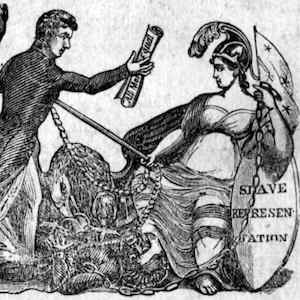Slaves and the Courts, 1740-1860
This site offers 105 documents published between 1772 and 1889 that deal with the legal experiences of slaves and the legal aspects of slavery in the United States and Great Britain. These include arguments, examinations, reports, testimonies, and other materials related to cases involving slaves, slave traders, and abolitionists. Famous cases such as Somerset v. Stewart; the Amistad case; the Dred Scott decision; and the trials of the rebel Denmark Vesey, the abolitionist William Lloyd Garrison, and the abolitionist and rebel John Brown are included, as are lesser-known cases. Users can search the documents by keyword and sort according to subject, author, or title. The documents can be viewed as facsimile or transcribed text. There are links to more than 30 related websites. There is also a special exhibit on the slave code of the District of Columbia (the only document not transcribed).
The website is easy to use and the search engine works well. Although the documents are not interpreted, the links provide background information. Teachers in search of additional contextual information might consult From Slavery to Freedom: A History of African Americans by John Hope Franklin and Alfred A. Moss, Jr. (2000); Hard Road to Freedom: The Story of African America by James Oliver Horton and Lois E. Horton (2001); To Make Our World Anew: A History of African Americans, edited by Robin D. G. Kelley and Earl Lewis (2000); and American Slavery, 1619-1877, by Peter Kolchin (1993).
Slaves and the Courts can be used in the classroom in many ways. Students could use the full-text primary sources as the basis for research projects supported by secondary sources. The materials on the Amistad case might be paired with a viewing of the movie Amistad for a discussion about how history is presented in different media. Students could also think about how primary sources are created and how historians use them. For example, they could compare the texts on this website with the images on the website The Atlantic Slave Trade and Slave Life in the Americas: A Visual Record and discuss how information can be gleaned from different kinds of sources. The people involved in these legal cases couched their arguments and testimonies in specific ways in order to achieve their ends. Analyzing how people presented themselves and their ideas in these cases encourages students to think about the multiple perspectives contained in any primary or secondary source, and about the challenges of studying and writing history.
